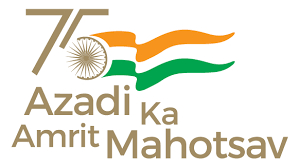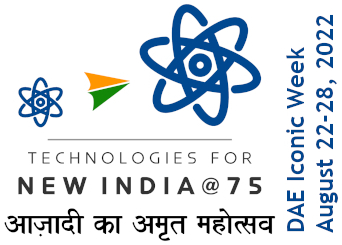Saha Memorial Lecture : Prof. Govind Swarup, FRS
Date & Time : 7th March, 2018 at 4.15 PM
Venue : Meghnad Saha Auditorium, SINP
Abstract : After an introduction to radio astronomy, I will describe some of the great discoveries made by radio astronomers that have revolutionized our understanding of the Universe. Discovery of powerful radio galaxies and quasars indicated the presence of supermassive Black Holes of millions of solar masses at the centers of many galaxies. Discovery of the Cosmic Microwave Background Radiation has provided strong support to the Big Bang origin of the Universe. During the second part of my talk I will describe some of major astronomical results that have been obtained using the Ooty Radio Telescope (ORT) and the Giant Metrewave Radio Telescope (GMRT) in India. GMRT has been used by astronomers from 32 countries in the world, with ~ 50% usage by astronomers in India. Finally, I shall describe briefly the Square Kilometer Radio Telescope (SKA) for answering some of the key questions today.
Profile:
Professor Govind Swarup is an internationally renowned radio astronomer and one of the pioneers of radio astronomy. He is known for his outstanding achievements in designing and building ingenious, innovative and powerful observational facilities for front-line research in radio astronomy, namely, the Ooty Radio Telescope (ORT) and the Giant Metrewave Radio Telescope (GMRT) near Pune.
Professor Govind Swarup was born at Thakurdwara, Uttar Pradesh in 1929. He received B.Sc. degree in 1948 and M.Sc. in Physics in 1950 from the Allahabad University. He then worked at the National Physical Laboratory (NPL), New Delhi (1950-56), Radio Physics Laboratory of CSIRO, Australia (1953- 55); Harvard University (1956-57) and in the Department of Electrical Engineering, Stanford University (1957-60). He obtained PhD degree from Stanford University in
1961 studying solar radio emission using a microwave interferometer built by him. He subsequently worked at Stanford University as an Assistant Professor from 1961 to 1963. He joined the Tata Institute of Fundamental Research (TIFR), Mumbai in 1963. Professor Swarup was the Director of the National Centre for Radio Astrophysics, TIFR during 1993-94.
1961 studying solar radio emission using a microwave interferometer built by him. He subsequently worked at Stanford University as an Assistant Professor from 1961 to 1963. He joined the Tata Institute of Fundamental Research (TIFR), Mumbai in 1963. Professor Swarup was the Director of the National Centre for Radio Astrophysics, TIFR during 1993-94.
India entered into radio astronomy research with the construction of the Ooty Radio Telescope by Professor Swarup. Lunar occultation observations using the Ooty Radio telescope led to the determination of angular sizes of many distant radio galaxies and quasars supporting the Big Bang model of the Universe. Other pioneering contributions made by him are connected to discovering U-type solar radio burst, studies on radio emission from the quiet sun and developing gyro-magnetic radiation model for solar microwave emission. He spearheaded the
design and successful construction of the Giant Metrewave Radio Telescope which is now used by astronomers from all over the world. Professor Swarup's far-sightedness and innovative concepts lead to the making of the next generation international radio telescope, the Square Kilometre Array.
design and successful construction of the Giant Metrewave Radio Telescope which is now used by astronomers from all over the world. Professor Swarup's far-sightedness and innovative concepts lead to the making of the next generation international radio telescope, the Square Kilometre Array.
Professor Swarup was conferred the SS Bhatnagar Award (1972) and Padmashri (1973). He was elected Fellow of the Royal Society, London (1991) as well as all Science Academies of India. He was also the recipient of PC Mahalanobis Medal (1984) and CV Raman Medal (2003) of INSA, INSA-Vainu Bappu Memorial Award (1987), Tskolovosky Medal by USSR Cosmonautics Federation (1987), Meghnad Saha Lecture Award (1987), TWAS Award in Physics (1988), John Howard Delinger Gold Medal by International Radio Scientific Union (1990), JC Bose INSA-Royal Society Lecture (2003), Grote Reber Gold Medal, Australia (2007), and Lifetime Achievement Award of DAE (2008).





.png)